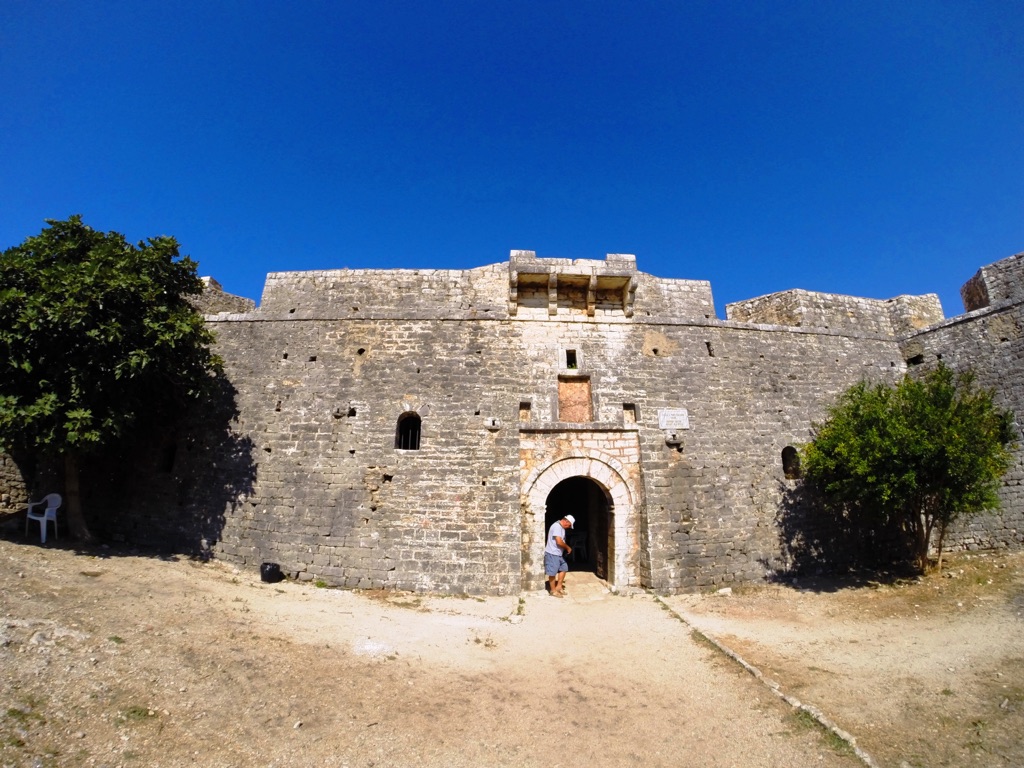Porto Palermo Castle, perched on a small peninsula in the Albanian Riviera, is a site of historical intrigue and architectural splendor. The castle overlooks the clear waters of the Ionian Sea, offering breathtaking views and a glimpse into the past. Its origins are often attributed to the rule of Ali Pasha of Tepelena in the early 19th century, though some suggest it may have earlier Venetian roots. The fortress has stood the test of time, surviving through periods of conflict and peace, and today stands as a testament to the region’s rich history.
Get your dose of History via Email
Historical Background of Porto Palermo Castle
The discovery of Porto Palermo Castle is not documented in modern historical records. However, it is widely believed that Ali Pasha of Tepelena, an Ottoman Albanian ruler, commissioned its construction. The castle’s strategic location was ideal for controlling the maritime routes in the Ionian Sea. Ali Pasha’s rule, from the late 18th to the early 19th century, was marked by the construction of several fortifications to consolidate his power.
Ali Pasha was known for his ambitious building projects, and Porto Palermo Castle is no exception. The fortress was built with robust stone walls and featured a triangular shape with rounded towers. It served as a military stronghold and a residence for Ali Pasha. The castle’s design reflects the military architectural style of the period, with elements that suggest Venetian influence, possibly indicating an earlier foundation.
Throughout its history, Porto Palermo Castle has witnessed various events of significance. It played a role in the power struggles of the region, serving as a defensive bastion against both local and foreign threats. After the fall of Ali Pasha, the castle continued to be of military importance, even being used by the Italian army during World War II.
The castle’s historical importance is not limited to military events. It is also associated with legends and tales, such as those surrounding Ali Pasha’s dramatic life and his eventual downfall. The fortress has become a symbol of the region’s tumultuous past and a reminder of the legacy left by one of Albania’s most notable historical figures.
Today, Porto Palermo Castle is a cultural heritage site that attracts tourists and history enthusiasts alike. Its preservation allows for a deeper understanding of the region’s history and the architectural prowess of the time. The castle’s past inhabitants and its role in historical events continue to be subjects of research and interest.
About Porto Palermo Castle
Porto Palermo Castle stands as a formidable structure made primarily of stone. Its triangular layout is punctuated by rounded towers, a design choice that provided both strength and a wide field of vision for defense. The walls, thick and imposing, have withstood the ravages of time and conflict, preserving the castle’s majestic appearance.
The construction methods and materials used in the castle’s building process were typical of the early 19th century. Local stone was the primary resource, carved and fitted to create the robust fortifications that characterize the structure. The castle’s architecture is simple yet effective, with an emphasis on functionality over ornamentation.
One of the architectural highlights of Porto Palermo Castle is its central courtyard. This open space served as a focal point for the castle’s inhabitants, providing a place for gatherings and daily activities. The surrounding chambers, which include storage rooms, barracks, and living quarters, were all designed to support the needs of those stationed at the fortress.
The castle also features a small chapel, which is said to have been built for Ali Pasha’s wife, Vasiliki. The chapel’s presence within the castle walls is a testament to the personal significance the fortress held for its commissioner. It adds a layer of cultural and religious history to the site.
Despite its military origins, Porto Palermo Castle also offers stunning views of the surrounding sea and landscape. This combination of natural beauty and historical architecture makes it a unique and captivating destination for visitors from around the world.
Theories and Interpretations
Several theories about Porto Palermo Castle’s origins and uses have been proposed over time. While it is widely accepted that Ali Pasha built the castle, some historians suggest that it may have been constructed on the foundations of an earlier Venetian fort. This theory is supported by the castle’s architectural features, which bear resemblance to Venetian coastal fortifications.
The castle’s purpose has also been a topic of debate. While its primary role as a military stronghold is clear, some believe it may have served additional functions. For instance, it could have been a prison or a place of exile for political enemies. The presence of the chapel suggests that it also had religious or ceremonial uses.
Mysteries surround the castle, including tales of hidden tunnels and secret rooms. These stories, while not substantiated by concrete evidence, add to the allure and enigmatic nature of the site. They reflect the human tendency to weave narratives around historical structures.
Historical records and archaeological studies have attempted to match the castle’s features with known events and practices of the time. Dating the structure has involved methods such as analyzing construction techniques and materials. These studies have provided insights into the castle’s past but have not dispelled all the mysteries.
Despite the various interpretations and theories, Porto Palermo Castle remains an emblematic site that captures the imagination. Its history is a blend of fact and legend, offering a rich tapestry for scholars and visitors to explore.
At a glance
Country: Albania
Civilization: Ottoman Empire (attributed to Ali Pasha of Tepelena)
Age: Early 19th century (construction period)
Conclusion and Sources
Reputable sources used in the creation of this article include:

